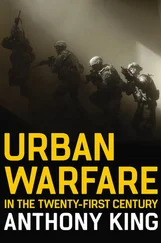Badanov’s 4 TA was the main force blocking Hube’s escape, with his 10 GTC holding the vital road junction at Kamenets-Podol’skiy and the 6 GMC located just west of there. Although Badanov only had about 100 tanks left, he still had plenty of infantry, artillery and anti-tank guns with him. The 10 GTC formed a hedgehog in Kamenets-Podol’skiy which blocked the main routes across the Smotrich River, a tributary of the Dnestr. Rather than assaulting the Soviet strongpoint, the 17.Panzer-Division seized a crossing site over the Smotrich north of Kamenets-Podol’skiy and Hube’s army crossed over there. In the process, the 10 GTC itself was temporarily surrounded at Kamenets-Podol’skiy and Badanov, trying to stop the German breakout, was badly wounded on 29 March. The experienced General-leytenant Dmitri K. Lelyushenko was brought in to take command of 4 TA, but there was little that he could do but try to delay the breakout.
Initially, Zhukov was over-confident about the Kamenets-Podol’skiy pocket and simply assumed that Hube’s PzAOK would sit put. Instead of reinforcing Badanov, Zhukov sent Katukov’s 1 TA to capture Chernovtsy on 30 March and focused most of his effort on preventing any German units from escaping south across the Dnestr. He also committed the bulk of the 60th Army to reducing the German fortress of Tarnopol, even though the garrison was less than 5,000 troops. Both Zhukov and Konev used their infantry armies to compress the northern side of the pocket, but paid little attention to the western side of the pocket. At the same time, Hitler was furious that both Heeresgruppe Süd and Heeresgruppe A were in retreat and he opted to sack both von Manstein and von Kleist, whom he had lost faith in. In the case of von Manstein, the relief was not unjustified since von Manstein had consistently failed to anticipate enemy actions since Kursk and seemed more interested in retreats than counter-attacks. In their place, Hitler substituted Generalfeldmarschall Walter Model to command Heeresgruppe Süd and Schörner to command Heeresgruppe A. However, the immediate impact on the battle was negligible and both army groups continued to retreat.
By 31 March, Hube was advancing steadily westward and pushing back Lelyushenko’s over-extended 4 TA (part of which was still encircled at Kamenets-Podol’skiy). Recognizing that Hube was escaping westward and not southward as expected, Zhukov ordered Katukov to bring part of 1 TA back north of the Dnestr to assist 4 TA. Nevertheless, Zhukov did not move any significant infantry forces into this area to strengthen the defence, which enabled Hube’s desperate forces to continue pushing westward. By 4 April, Hube’s army was approaching the Strypa River at Buchach. Meanwhile, Model was assembling the relief force near Berezhany, 60km away, consisting of Hausser’s II. SS-Panzerkorps (9.SS-Panzer-Division Hohenstaufen and 10.SS Panzer-Division Frundsberg ), schwere Panzerjäger-Abteilung 653 (with 28 rebuilt Ferdinands) and two infantry divisions. Hausser’s two SS-Panzer-Divisionen had been training in France, but they were not fully equipped as Panzer-Division. Instead, each only had two companies Pz IVs and two batteries of StuG-IIIs, a total of 98 medium tanks and 88 assault guns. Nevertheless, by 6 April Hausser was attacking eastward toward Buchach to meet Hube.
In the end, the skill and desperation of Hube’s troops to escape and Zhukov’s failure to bolt the door decided the battle in the German favour. With the 6. and 7.Panzer-Divisionen in the lead, Korpsgruppe Breith fought its way through the Soviet cordon. Belatedly, Zhukov tried to shift six rifle divisions and the 2 GTC into Hube’s path, but 17.Panzer-Division fended them off long enough for the rest of the army to reach the Strypa River. On 8 April, the 6.Panzer-Division and two Tigers from the s.Pz.Abt.509 fought their way into Buchach and shortly thereafter, linked up with elements of II.SS-Panzerkorps. It took almost a week for all of Hube’s exhausted army to cross the Strypa River, but then it was able to form a new continuous front with PzAOK 4. In terms of equipment, PzAOK 1 was in extremely poor shape with barely two dozen tanks left (one Tiger), a few assault guns and seven Nashorns. The escape of Hube’s PzAOK 1 from encirclement at Kamenets-Podol’skiy was one of the great operational achievements of the Second World War, since it prevented the complete collapse of the German southern flank, at least for the time being. While Winston Churchill – speaking of Dunkirk – was correct that retreats do not equal victories, the successful breakout of Hube’s army was nevertheless a huge morale boost for the Wehrmacht.
There were two important tactical postscripts to the Korsun Pocket and Hube’s Pocket, both of which reflected the growing importance of German armour being used to rescue trapped garrisons. In the first case, the survivors of Gille’s Wiking division’s breakout from Korsun were sent to the Cholm-Kovel region in eastern Poland to regroup. Barely a month after arriving in Poland, a new Soviet offensive by the 2nd Byelorussian Front’s 47th Army encircled the city on 15 March, trapping over 4,000 troops. Although Wiking’s troops were outside the pocket, they had negligible combat capability. Nevertheless, a relief effort was hastily organized. The II./SS-Panzer-Regiment 5 had just arrived at Cholm after re-equipping with Panther tanks, but only one company was combat-ready and it was committed to lead the relief effort. By 21 March, Soviet Sherman tanks fought their way into Kovel and the city could fall at any time. On 27 March, a scratch relief force was assembled at Lukov, west of Kovel, consisting of an SS Kampfgruppe (17 Panthers and III./SS-Panzer-Grenadier-Regiment Germania ) and a Heer Kampfgruppe (7 StuG IIIs and Grenadier-Regiment 343). The direct route to Kovel led through a frozen marsh crossed by a railroad track, which was blocked by the 60th Rifle Division, a battery of anti-tank guns and mines. The Waffen-SS opted for the direct approach and attacked at midday on 28 March, during a blizzard. No artillery support was available due to communication problems – one of the most common forms of friction in war. {24} Soviet 76.2mm anti-tank guns were sited at a right angle to the road and managed to destroy three Panthers with flank shots into their thinner side armour. When the Panthers tried to manoeuvre off road, 10 of the remaining 14 became bogged down in the soft terrain, which halted the relief effort. Recovering 10 Panthers from bog-like terrain with only a single Bergepanther consumed more than a day and the Heer troops were not sanguine about trying to push further with such a small force. Nor did the column have any pioniers to clear mines along the road. Nonplussed, the SS Panzer-Kompanie commander opted to go on alone and with a column of just nine Panthers he boldly advanced through the Soviet lines on the night of 29–30 March, losing two to mines, but then reached the city. However, this effort failed to lift the siege and only added a handful of tanks to the trapped garrison. {25}
On 2 April, the rest of the II.SS-Pz.-Rgt.5 began arriving by rail with 59 more Panthers and a larger relief effort was assembled, including Kampfgruppen from 4. and 5.Panzer-Divisionen. On 4 April, the second relief attempt began and the Soviets desperately tried to stop it. Untersturmführer Renz, leader of the reconnaissance platoon from the II./SS-Pz.Abt.5, described the final lunge toward Kovel:
During our next forward move, we took a hit, which, luckily, only rattled our Panzer. My gunner reacted with lightning speed. I directed him, patting his shoulder with my right hand, exactly to the target. With ‘Explosive shell – 800 metres – cluster of buildings, Pak position in front – fire!’ we began the firefight. Our first shot was dead-on. A huge cloud of dust, mixed with fragments of trees and building material, rose into the sky. Being the point Panzer, I directed the fire of the whole 6.Kompanie by radio. Grossrock followed my gunner with the fire from his five Panthers, and within a few minutes we managed to stop the fire from the Paks and the tanks. Afterwards it was determined that we had destroyed several tanks, approximately ten Paks, and numerous heavy and light machine guns. {26}
Читать дальше
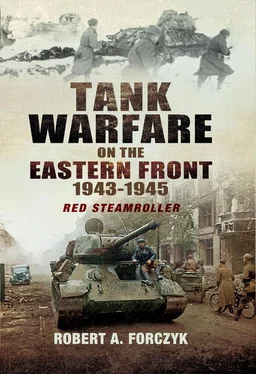



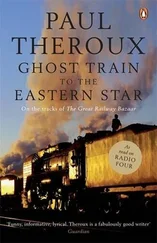
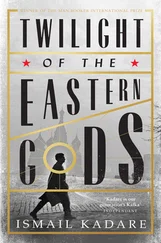
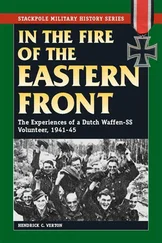

![John Stieber - Against the Odds - Survival on the Russian Front 1944-1945 [2nd Edition]](/books/405234/john-stieber-against-the-odds-survival-on-the-russian-front-1944-1945-2nd-edition-thumb.webp)


